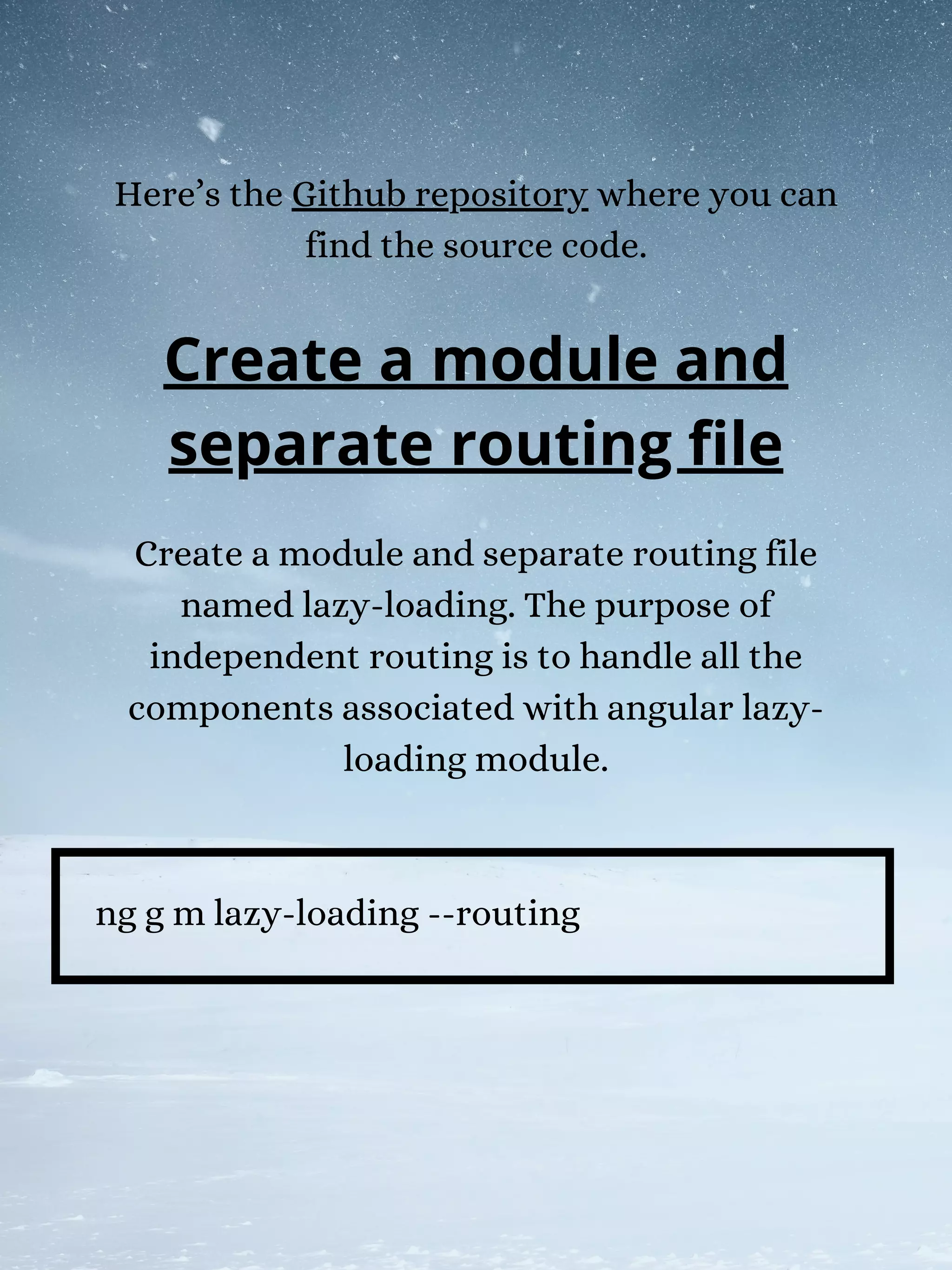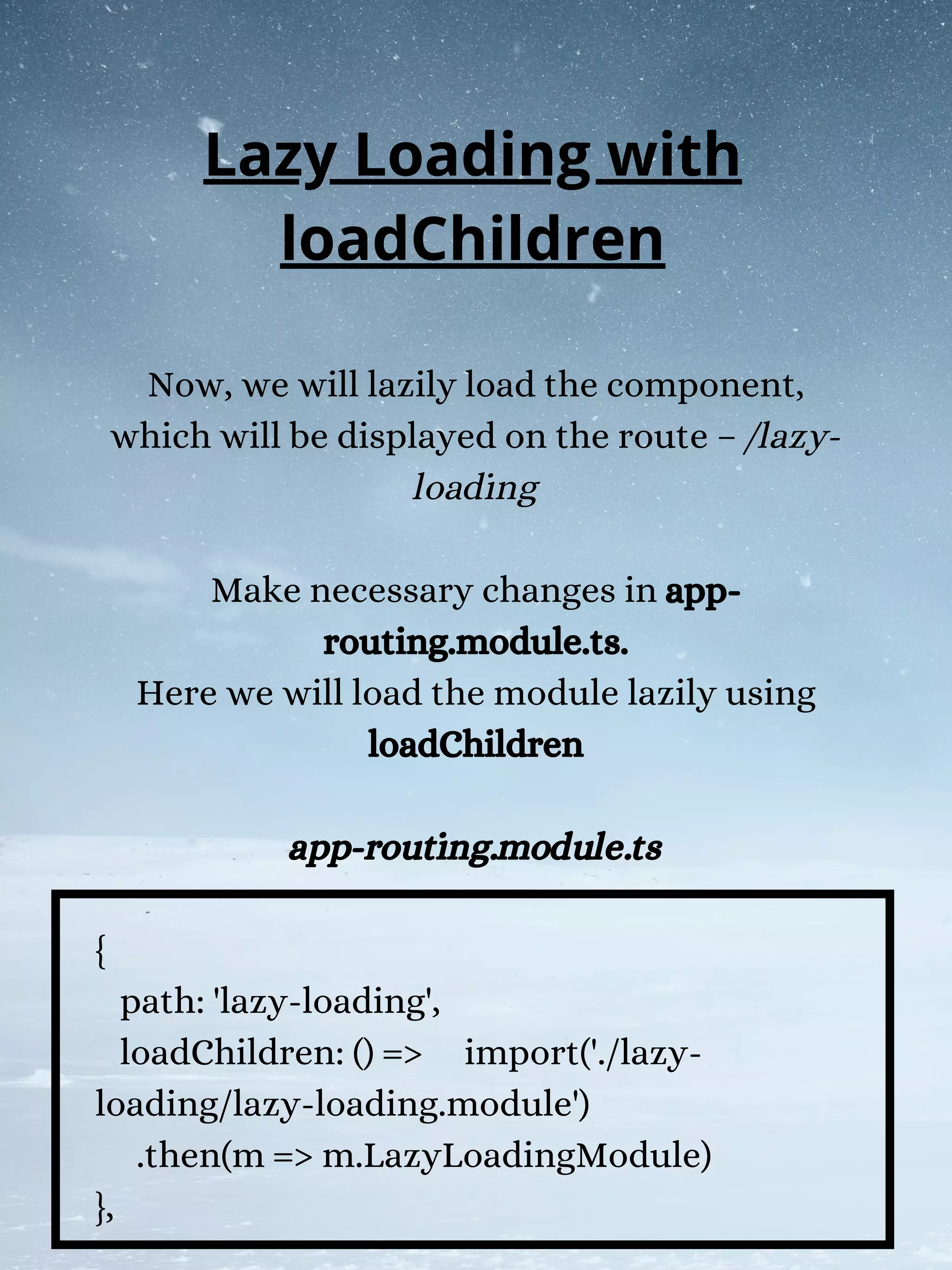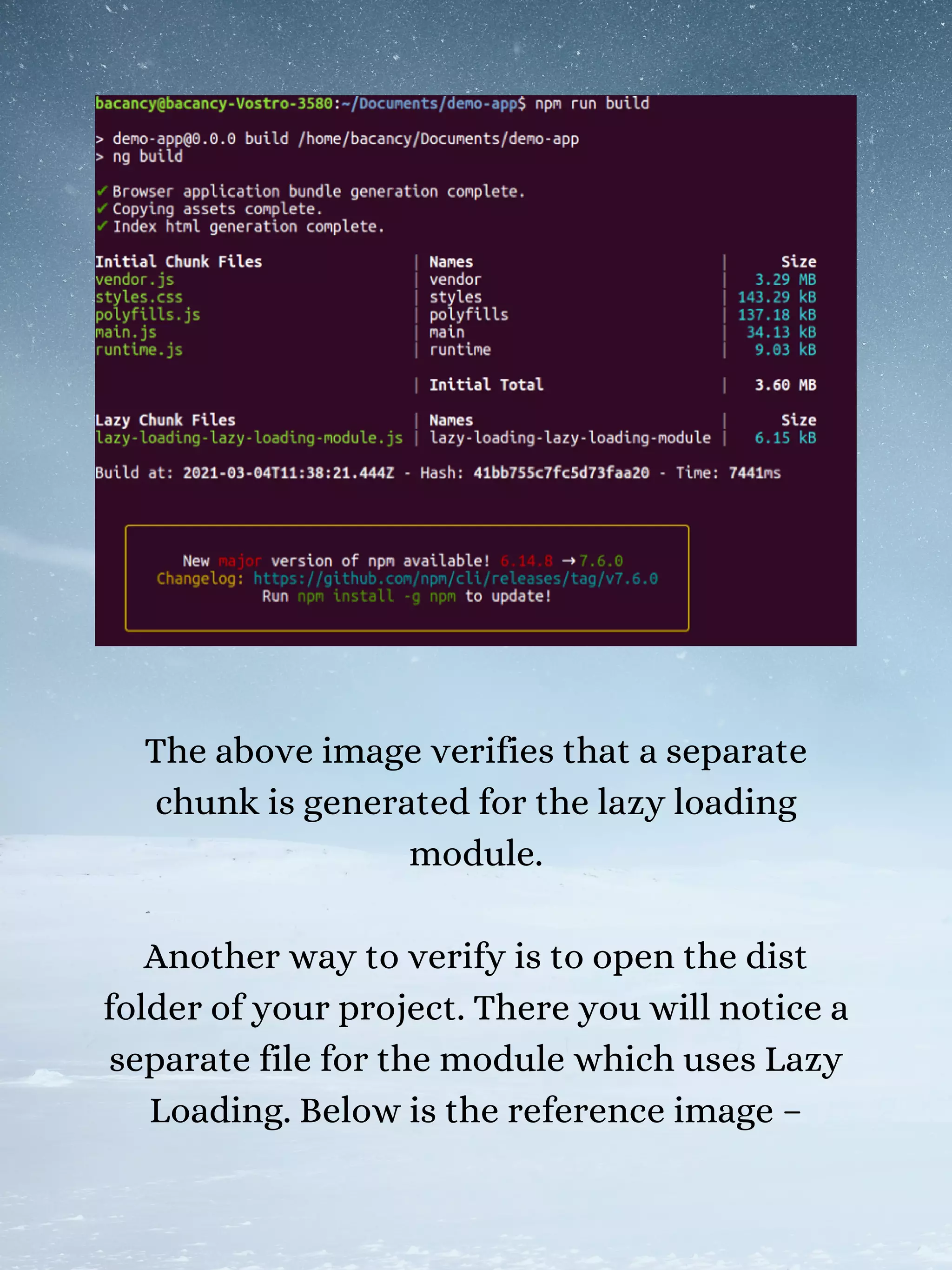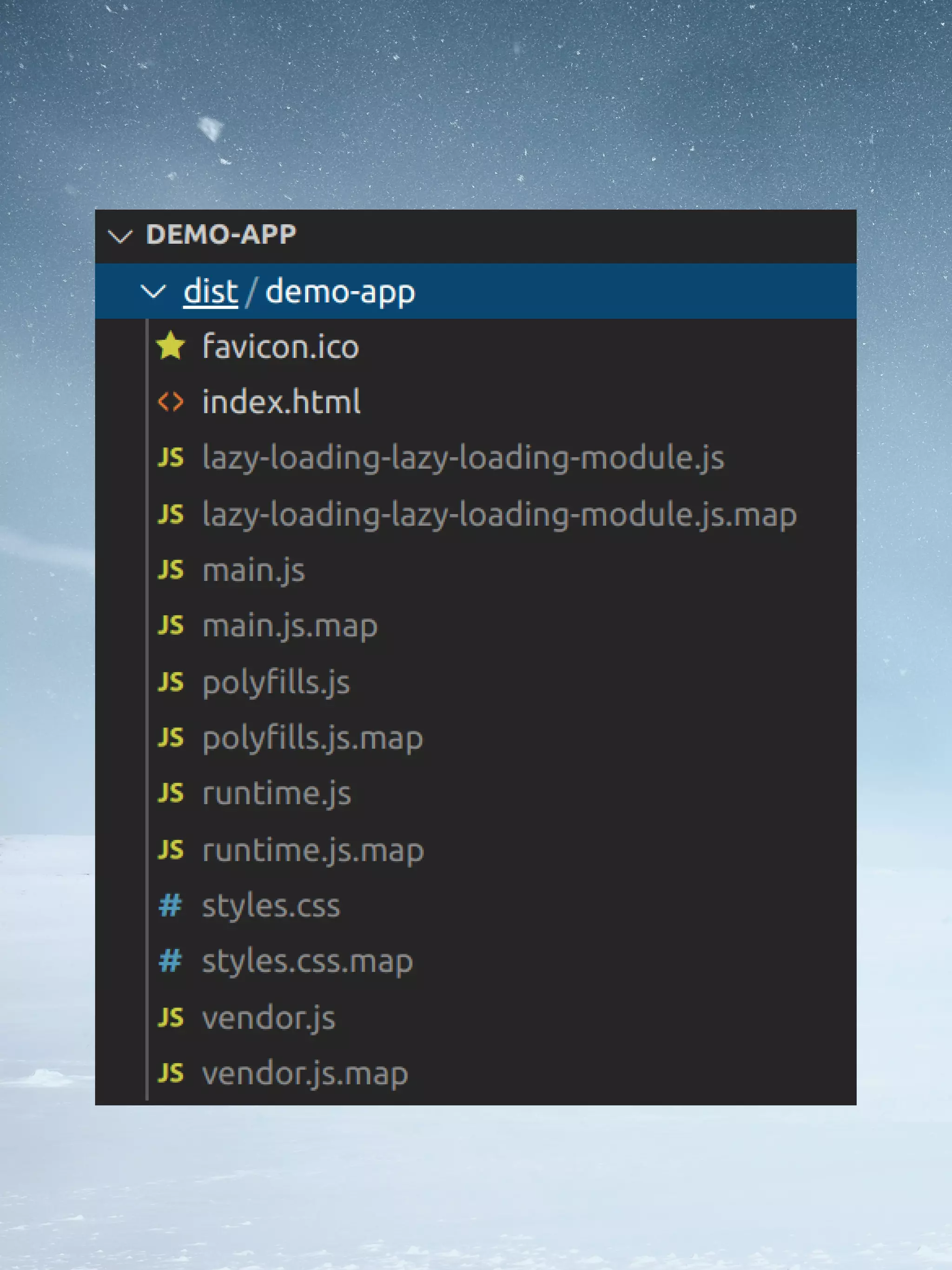This document provides a tutorial on implementing lazy loading in Angular. It explains that lazy loading loads components only when their routes are activated, improving performance. It then demonstrates how to set up lazy loading through creating a module, routing file, component, and using the loadChildren property. Verification of lazy loading is shown through separate bundles being generated for lazy loaded modules.










![Create a component named lazy-demo within
the lazy-loading module
ng g c lazy-demo
We will be adding a link in the header on
whose route we will implement lazy loading.
app.component.html
<li class="nav-item">
<a class="nav-link" [routerLink]="['/lazy-
loading']">
Lazy Loading
</a>
</li>
Create a component
Adding Link to Header](https://image.slidesharecdn.com/acompletetutorialonlazyloadinginangularv111-210315083142/75/Step-by-Step-Guide-on-Lazy-Loading-in-Angular-11-11-2048.jpg)


![import { NgModule } from '@angular/core';
import { RouterModule, Routes } from
'@angular/router';
import { LazyDemoComponent } from './lazy-
demo/lazy-demo.component';
const routes: Routes = [
{ path: '', component: LazyDemoComponent }
];
@NgModule({
imports: [RouterModule.forChild(routes)],
exports: [RouterModule]
})
export class LazyLoadingRoutingModule { }](https://image.slidesharecdn.com/acompletetutorialonlazyloadinginangularv111-210315083142/75/Step-by-Step-Guide-on-Lazy-Loading-in-Angular-11-14-2048.jpg)







